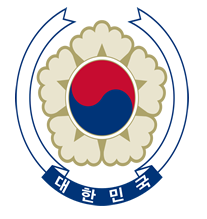South Korea: Government
Key Figures
- Chief of State:
- President Yoon Suk Yeol
- Head of Government:
- President Yoon Suk Yeol
Overview
- Government Name:
- Republic of Korea
- Constitution:
- Adopted: 1987; Protects individual rights in additional to economic provisions, such as stable and balanced growth rates, proper distribution of income, and preventing abuse of economic power.
- Government Type:
- Presidential Republic

Index of Economic Freedom
Country Risk Rating
Government Branches
| Main Powers | Election Process | Election Cycle 1 | |
|---|---|---|---|
| Executive | Commander-in-chief of the armed forces, appoints prime minister and supreme court judges, and is in charge of executory tasks of the government. |
Plurality vote. |
5 years |
| Judicial | The supreme court is independent of the government and is highest court in the land. The constitutional court interprets the constitution. |
Supreme court chief justice appointed by the president with the consent of the National Assembly; other justices appointed by the president upon the recommendation of the chief justice and consent of the National Assembly. Constitutional court justices appointed - 3 by the president, 3 by the National Assembly, and 3 by the supreme court chief justice. |
6 years |
| Legislative | Approves nominations by the president, can impeach the president, in charge of creating legislature. |
246 seats elected by plurality vote in single-member constituencies and 54 seats through closed-list proportional representation. |
4 years |
Regional Trade Blocs
International Organization Participation [2]
Environmental Agreements [3]
Tax Information [2]
- Tax Authority:
- National Tax Service
- Tax Name:
- VAT
Sources:
- ElectionGuide http://www.electionguide.org/
- EY, http://www.ey.com
- CIA World Factbook, https://www.cia.gov/the-world-factbook/
- U.S. Bilateral Relations Fact Sheets http://www.state.gov/r/pa/ei/bgn/


